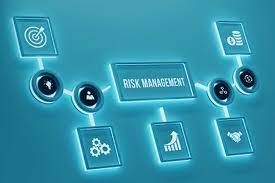With the ever-increasing reliance on technology and automation, financial institutions need to make better and faster financial and economic decisions. However, as far as risk management is concerned, a robust model risk management approach is critical. Over the last few years, many financial institutions have embraced predictive models to conduct business and economic analyses. So, availing of model risk management services becomes essential for financial institutions to mitigate the risks associated with model misuse or incorrect selection.
Understanding Model Risk Management
Before understanding what model risk management or MRM is, it’s crucial to understand what models are. Model risk management refers to managing risk defined by incorrect selection or misuse of models and their consequences. The approach employs practices, behaviors, and techniques to measure, identify, and mitigate such risks. It is a mathematical and quantitative approach or system that helps process the input data into statistical estimates.
Why do Financial Institutions Need Model Risk Management?
Financial institutions such as insurance companies and banks rely heavily on credit, behavioral, and market models for various purposes and daily activities. Therefore, model risk management services are integral to operational and risk management efficiency.
Since these entities take significant risks to make money, they employ different models to understand client behavior, access fund adequacy, define fund requirements, make investment-related decisions, manage data analytics, and evaluate risks. Therefore, implementing a practical framework for model risk management is a requisite for financial organizations.
Increased Use of Models, Higher Risks, and Heightened Need for MRM
Many financial institutions use models to handle data proliferation and streamline economic analyses. They help increase efficiency, reduce repeatable and mundane tasks, and save resources and time. While model use allows for better and faster decision-making, it also presents significant risks for the business’s finances and reputation. That is why implementing a solid framework of MRM is a must to govern model selection and usage.
Risk Mitigation with Three Lines of Defense
While selecting suitable models and using them for financial institutions sounds easy enough. However, the reality of the matter is that model risk management services have complex team networks to safeguard the entity through these three lines of defense:
- Model Owners, Users, and Developers
These compose the first line of defense for model risk management. Since these people have maximum familiarity with the model’s workings and processes, they are the first to act whenever something goes wrong. However, they are usually unaware of the current external regulations and internal policies. Model risk management prevents discrimination and creates risk thresholds to ensure compliance with the existing laws and regulations.
- Model Validation, Governance, and Oversight Team
The second line of defense stress tests each AI model to ensure it is suitable for various thresholds. During the validation process, the team tests a system or product to ensure it performs the intended function and fits the purpose. If it is an AI model, they test various inputs to identify any outliers that may increase the model risk. Then, they double-check the model’s results to see if they meet the expectations. All in all, model risk management services ensure proper governance in place.
The compliance team is also integral to the second line of defense for many financial institutions. While validation is necessary to ensure purpose fulfillment with the model, the compliance team ensures compliance with government regulations and standards. They check the reason behind each decision and safeguard against any legal trouble. Since most laws protect the customers and citizens, the team also establishes fairness and non-partiality behind the model’s logic.
- Internal Audit
Internal Audit ensures that the financial institution follows the expected procedures and processes with accuracy and diligence. They evaluate a company’s corporate governance, accounting processes, and other internal controls to ensure regulatory compliance. It also helps maintain timely and accurate data collection and financial reporting to improve operational efficiency, identify issues, and correct lapses before it gets too late.
Model risk management services are essential to detect, prevent, and mitigate ethical and financial risks. They protect a financial institution by preventing lawsuit discrimination and protecting against PR disasters. Although AI models make processes extremely fast and automated, model risk management keeps them in check and benefits the most from them while mitigating the risks involved.
Read Also: Regulatory Objectives and Industry Standards for Model Risk Management





